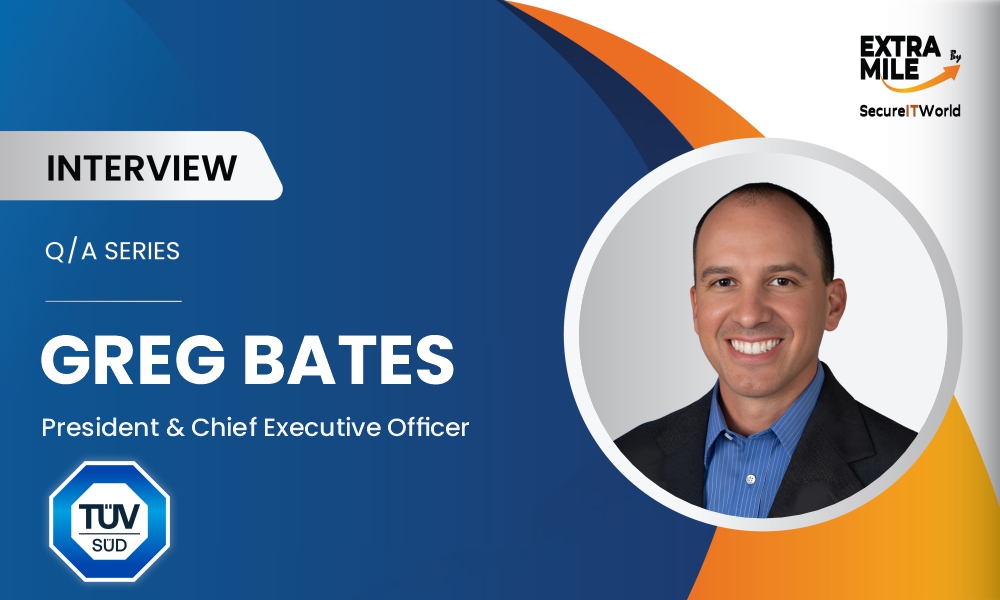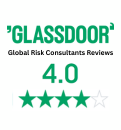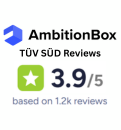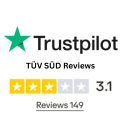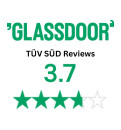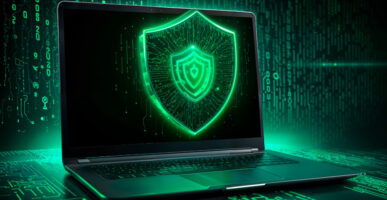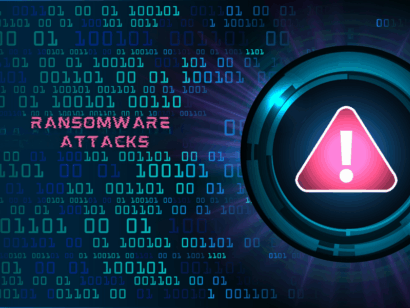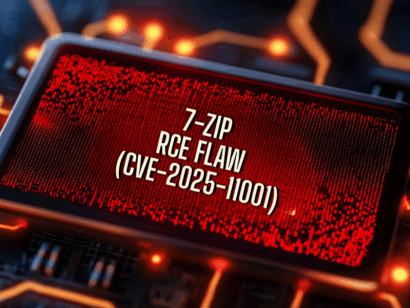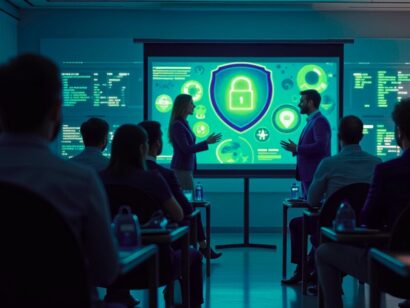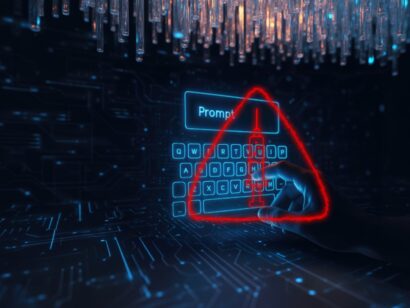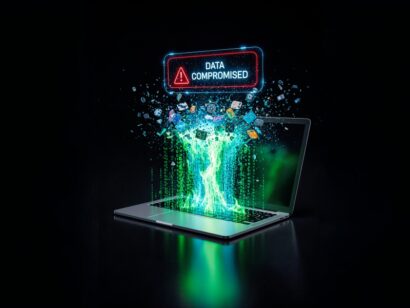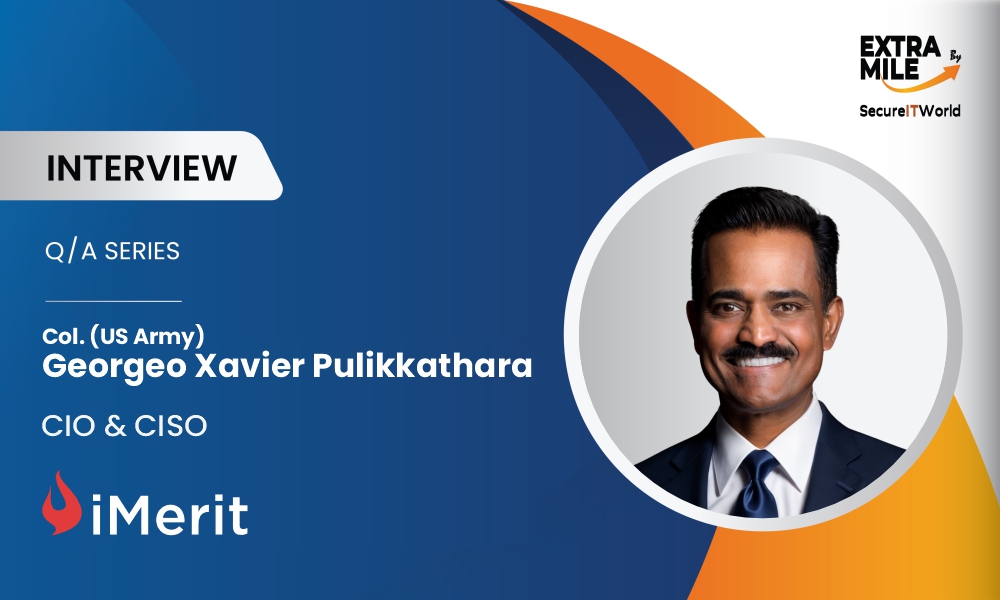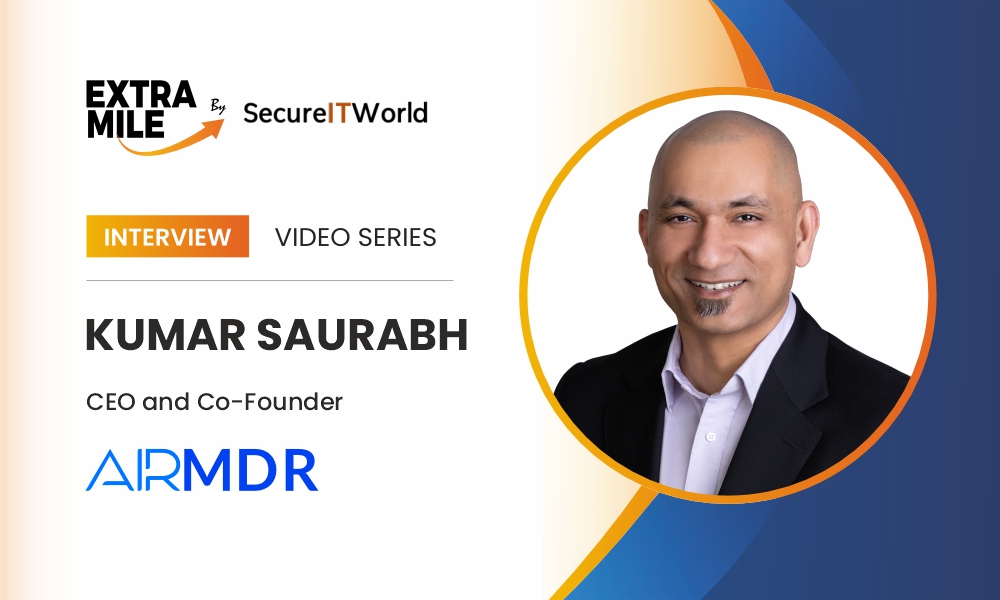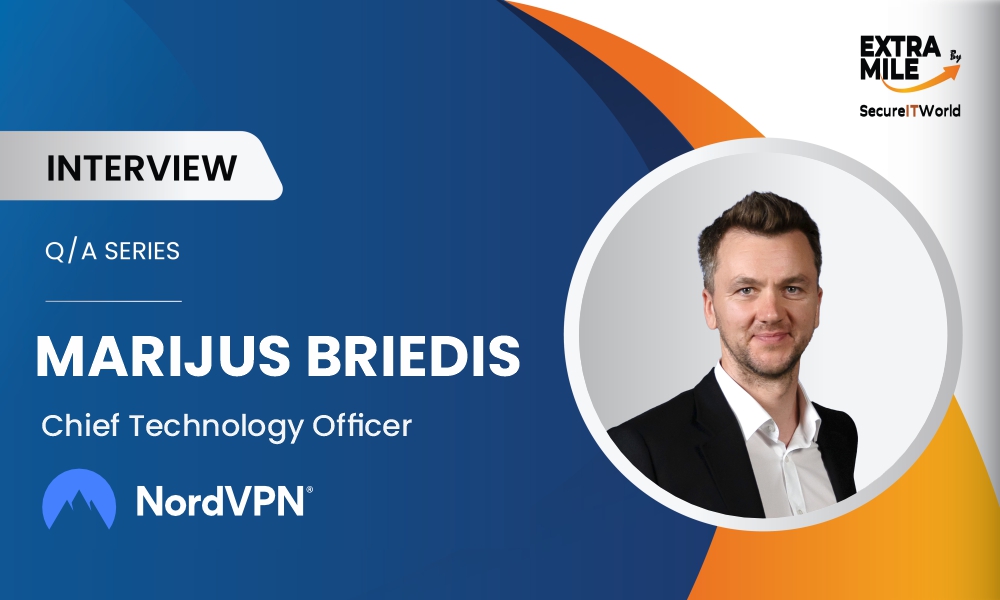ExtraMile by SecureITWorld is a top-leading interview series featuring visionary industry leaders and pioneers. Here we discuss the prevailing trends, strategies, and practices in the tech, digital, and cybersecurity space.
For today’s dynamic discussion, we have Greg Bates, President and CEO of Global Risk Consultants Corp., the leading provider of unbundled property risk engineering solutions. Greg is here to share his valuable insights in the risk management space.
Backed by 60+ years of experience, GRC is known for pioneering tailored, site-specific risk engineering programs that span across Fire Protection Engineering, Natural Hazard Analysis, Machinery Breakdown Engineering, and Electrical Protection Services such as Infrared Thermography.
Greg, with an impeccable career in engineering consulting, certification, and auditing, leads the key strategic and operational directions at Global Risk Consultants Corp. In this conversation, Greg highlights how GRC’s client-first, data-driven approach empowers companies to proactively mitigate risks while reducing total costs. Under his leadership, GRC is reaching new heights in today’s global risk and compliance landscape.
Let’s explore everything about Greg’s professional journey, key leadership lessons, and GRC’s mission to help organizations make smarter, safer decisions for the future.
Welcome, Greg! We're thrilled to have you with us here!
1. You have an impressive background with specialties in risk management and property loss prevention! Could you take us through your professional journey and highlight the biggest takeaways that led to your current role as President and CEO at Global Risk Consultants?
Greg. Thank you. It's been a rewarding journey. Over the years, I’ve had the opportunity to work across a variety of disciplines — client strategy, technical solutions, risk consulting — which gave me a 360-degree view of what our clients need and how we can better deliver our services. With GRC, I have held most positions from Field Engineer, Account Engineer, Client Executive, as well as senior leadership roles. That experience provides me with a strong foundation for my new role. One of the biggest lessons I’ve learned is the importance of results — whether it’s achieving sales goals, growing accounts, or delivering risk insights that genuinely help clients make informed decisions. A strong technical background along with a client centric approach has guided my journey to the President & CEO role, where stewardship, vision, and execution all need to come together.
2. Being a visionary business leader for two decades, how do you foster trust and long-term collaboration among your team and clients? Does it contribute to company growth?
Greg. Trust is everything in our line of work. I’ve always believed that trust is earned over time—by consistently delivering value, being transparent in our communication, and standing by our commitments. Internally, I prioritize culture. The strength of GRC is our people, and we’ve built a team that’s collaborative, mission-driven, and technically exceptional. For clients, it’s about being a true partner—not just checking boxes but working alongside our clients to solve complex problems. That long-term approach has helped us grow in both size and stature. I don’t view trust and growth as separate—they go hand-in-hand.
3. Greg, what’s your take on the importance of property risk engineering for businesses? How does GRC help implement the solutions effectively?
Greg. Property risk engineering is no longer optional — it’s essential. Today’s insurance market is data-driven and highly selective. If a business doesn’t have the right risk data, they risk being deprioritized by insurance carriers and brokers. At GRC, our job is to deliver technically sound, objective insights that support better decisions — whether that's reducing loss potential, optimizing capital expenditures, or improving insurance outcomes. We’re independent, which means we operate solely in the client’s interest. Our engineers help clients quantify and mitigate risk in a way that’s rigorous, actionable, and globally consistent. That’s the value we bring.
4. You’ve also worked extensively in certification and auditing services. What are the major shifts observed in this space over the last decade?
Greg. We’ve seen a significant evolution in certification and auditing services. Auditing used to be a static, checklist-driven exercise. Today, it’s dynamic, data-informed, and deeply integrated into business strategy. There’s a heightened focus on transparency and digital traceability. Clients want insights, not just compliance reports. I think the real shift is from reactive auditing to proactive risk identification. At GRC and our parent company TÜV SÜD, we’re helping lead that transformation by itegrating technology, analytics, and domain expertise into all our services.
5. What’s the most common hurdle clients face in managing property risk? How does GRC address the same? Share any case study for better understanding.
Greg. One of the most common hurdles is fragmented or incomplete risk data. Without reliable data, it's nearly impossible to validate risk appetite, prioritize investments or communicate effectively with insurers. We help solve that through integrated, client-directed assessments that generate actionable intelligence. For example, one multinational manufacturing client came to us with a desire to greatly increase their risk retention. Basically, that means they wanted to reduce their insurance coverage for risks they feel are highly protected. It’s easy to say this but tough to justify to internal and external stakeholders without the critical data points to support this strategy. We reviewed their portfolio, conducted site visits, and generated data dashboards that allowed them to double their self-insured risk. We further helped to prepare tailored insurance submissions. The result was a clearer picture of their risk profile, improved capital utilization, and a better balance between risk acceptance and risk transfer.
6. Staying one step ahead in the competitive market is a must! How is GRC gearing up to remain competitive in a constantly dynamic risk and compliance environment?
Greg. Innovation is at the top of my agenda as CEO. But it’s not just about tech—it’s about aligning innovation with the realities our clients face. Climate risk, natural hazards, operational resilience — these are evolving challenges, and our job is to stay ahead of them. We’re also expanding our services in predictive maintenance, electrical safety, and climate change assessments—areas that not only improve risk outcomes but also operational efficiency for years to come. Service innovation is critical, and technology adoption will be part of it but not the answer to everything.
7. Can you elaborate more on how GRC’s impairment management system helped manage over 210,000 fire protection impairments? What were the core strategies involved?
Greg. Absolutely. Fires occurring where and when fire protection is impaired are devastating. As a result our online impairment system was designed to not only quickly and easily capture this information for clients but also help them manage this mission critical process. Managing over 210,000 fire protection impairments is a story of discipline and transparency. Our system documents and follows up on impairments for restoration and provides our account teams with the data needed to help minimize the event for clients. We review this information frequently because of its severity and help clients take timely action. All our services are built to help companies be proactive—not reactive. The core strategies include digitization, prioritization by risk severity, and clear escalation protocols. Clients get not only compliance assurance but also a reduction in operational exposure. It’s another example of how GRC turns risk data into strategic insight.
8. What are some of the core components of GRC's Electrical Protection Services, and how do they contribute to preventing electrical incidents?
Greg. Our Electrical Protection Services are comprehensive. We offer arc flash assessments, infrared thermography, and electrical safety workforce training—all rooted in NFPA and OSHA standards. These services are designed to identify hazards before they become losses. For instance, our thermography inspections detect early signs of electrical failure, helping clients both avoid downtime and costly equipment damage. One recent inspection found an issue that could have led to a potential $1 million loss but was mitigated in time thanks to our thermographer. It’s an example of how our Electrical Protection Services protect against incidents before they occur, supporting safe, continuous operations. Our clients appreciate that we combine deep technical knowledge with practical implementation.
9. From your perspective, how important is workforce training in ensuring the integrity of a risk control program? How does GRC help in this regard?
Greg. Training is foundational, helping to create and foster a loss control culture. Even the best systems and protocols can fall short without a workforce that understands and believes in them. At GRC, we provide tailored training—whether it’s on electrical safety, fire protection, or impairment protocols. We also offer virtual and in-person formats to meet different operational needs. The goal is to empower employees at every level to take ownership of risk. That’s how you build a resilient culture—through education, engagement, and repetition.
10. Greg, could you shed light on the top leadership traits that are non-negotiable, and every leader must possess?
Greg. For me, integrity is non-negotiable. Without it, trust breaks down. Next is adaptability — you need to be comfortable with and lead through change. Third, results orientation: leaders must deliver outcomes that matter. And finally, empathy. Whether it’s your team or your clients, people need to know they’re seen, heard, and supported. At GRC, we’re successful because we lead with those values. That’s how I intend to carry the torch forward.
Discover More In-depth Interviews:

